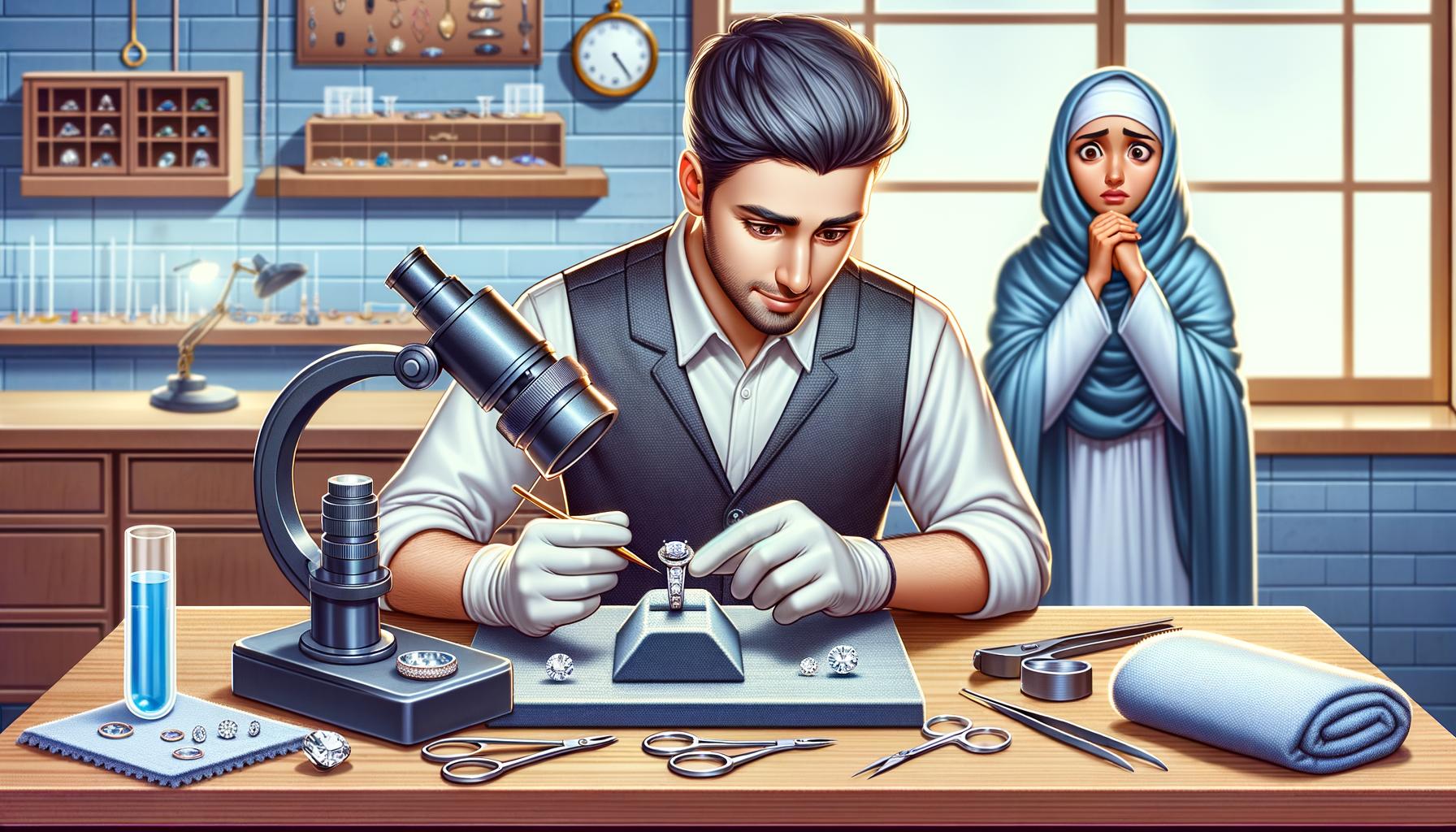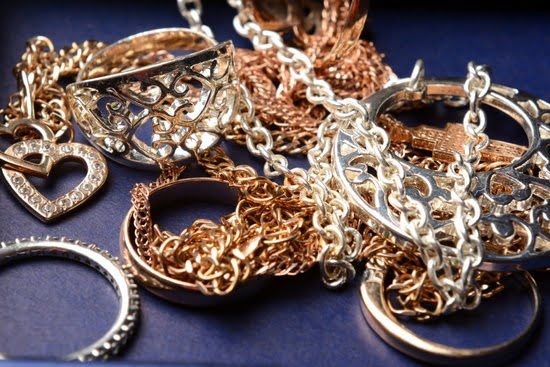The importance of regular jewelry inspections cannot be overstated, yet it’s a step many jewelry owners often overlook. People invest significant money, not to mention sentimental value, into their cherished pieces but then forget about the necessary maintenance that keeps them in pristine condition. From engagement rings to family heirlooms, jewelry inspections provide a critical service that helps preserve these valuable items for years to come.
Regular jewelry inspections are frequently neglected because many people assume their pieces are durable enough to withstand daily wear and tear without any issues. However, as with any valuable possession, proactive care is essential for longevity and peace of mind. This blog aims to shed light on why these inspections are crucial and how they contribute significantly to the long-term durability and aesthetics of your treasured items.
This article will delve into what exactly constitutes a jewelry inspection, discuss the benefits you stand to gain from routine checks, identify common problems discovered during these inspections, and explain the potential costs associated with neglecting this important upkeep. Furthermore, we’ll guide you through how and where to get your jewelry inspected professionally and offer tips for maintaining your pieces between professional checkups.
By sharing real-life stories of both cautionary tales and success stories, we hope to underscore why regular jewelry inspections should never be an afterthought.
What Is a Jewelry Inspection?
A jewelry inspection is a thorough examination performed on your precious pieces to ensure their condition, authenticity, and longevity. The scope of a jewelry inspection can vary significantly, ranging from a basic visual check to detailed professional assessments using specialized tools. During these inspections, every aspect of the jewelry is scrutinized, including the settings, clasps, prongs, gemstones, and the metal itself. By understanding the importance of regular jewelry inspections, you can maintain the integrity of your cherished items.
Different types of jewelry inspections include both DIY visual checks and professional evaluations conducted by certified jewelers. A visual inspection might involve carefully examining your pieces with the naked eye or a magnifying glass to look for any obvious defects such as loose stones or signs of wear and tear. On the other hand, professional inspections often go deeper; experienced jewelers utilize equipment like microscopes and ultrasonic cleaners to detect issues that are invisible to the untrained eye.
| Type of Jewelry | Recommended Inspection Frequency |
|---|---|
| Engagement Rings | Every 6 months |
| Everyday Wear Items (like watches) | Annually |
| Occasional Wear Pieces (necklaces, earrings) | Every 1-2 years |
By adhering to these schedules, you can keep your valuable possessions in pristine condition and safeguard them against unforeseen damages.
Benefits of Regular Jewelry Inspections
Longevity and Durability of Your Jewelry
The importance of regular jewelry inspections cannot be overstated when it comes to the longevity and durability of your beloved pieces. Just like any other valuable possession, jewelry requires periodic maintenance to keep it in optimal condition.
During an inspection, a professional jeweler will meticulously examine each component of your jewelry, ensuring that clasps are secure, settings are intact, and no parts are showing significant wear. Identifying these issues early on allows for minor repairs that prevent more substantial damage in the long run, ultimately extending the life span of your treasured adornments.
Maintaining Aesthetic Appeal
Regular inspections also play a crucial role in preserving the aesthetic appeal of your jewelry. Over time, dirt, oils from your skin, and environmental factors can dull the shine and brilliance of gemstones and metals. A thorough inspection often includes cleaning services that restore the piece’s original luster and beauty.
Beyond just cleaning, jewelers will polish scratches out of metal surfaces, tighten loose stones, and even offer advice on how to maintain that sparkling allure between visits. This consistent care helps ensure that your jewelry always looks as stunning as the day you received it.
Ensuring Value and Investment Protection
Another significant benefit derived from routine jewelry inspections is ensuring the value and protection of your investment. Fine jewelry often carries substantial financial or sentimental value-or both-and safeguarding this value is paramount.
Regular inspections help in maintaining accurate appraisals by verifying that all components are authentic and in excellent condition. By catching potential issues before they become major problems, you avoid costly repairs or replacements down the line-because once a stone is lost or metal prong breaks irreparably, the original material’s monetary worth can diminish drastically.
In summary, routine inspections not only preserve the physical integrity and appearance but also protect the emotional and financial investments tied to your treasured pieces.
Common Issues Detected During Inspections
During routine jewelry inspections, one of the most frequently encountered issues is loose stones or settings. This can apply to a variety of pieces such as rings, necklaces, and earrings where stones are held in place by prongs or other setting mechanisms. Over time, natural wear and tear or accidental knocks can cause these prongs to weaken or bend slightly.
If left unattended, this issue can lead to the loss of precious stones, which could be both emotionally and financially devastating. Regular inspections ensure that any such discrepancies are spotted early and rectified immediately.
Another common problem often found during jewelry inspections involves worn metal and prongs. Jewelry that is frequently worn is especially susceptible to this type of damage due to regular exposure to various elements like water, chemicals from cosmetics, and general physical abrasion.
Worn metal can weaken the structural integrity of a piece making it more prone to breaking or bending out of shape. Inspections allow for timely interventions such as re-tipping prongs or reinforcing weak areas, thereby extending the life of your cherished items.
Aside from the obvious signs of wear and tear, there are also hidden issues that aren’t visible to the naked eye but can be detected through professional equipment during an inspection. These can include hairline fractures within gemstones, hollow spaces inside metal constructs, and even microscopic dirt buildup in hard-to-clean areas which could compromise the piece’s overall stability over time.
The importance of regular jewelry inspections lies in their ability to uncover these hidden issues before they escalate into major problems requiring extensive repairs or replacements.
The Cost of Ignoring Jewelry Inspections
Ignoring regular jewelry inspections can lead to a myriad of issues that are both financially and emotionally taxing. For instance, unnoticed damage can compromise the overall integrity of your pieces. A loose setting or worn prong might go unseen until it’s too late, leading to the potential loss of precious stones. Regular jewelry inspections help catch these issues early on, allowing for timely repairs that save you from more extensive and expensive fixes down the line.
Financial repercussions aren’t the only concerns; emotional and sentimental impacts can be even more distressing. Heirloom pieces that carry significant sentimental value are irreplaceable. Imagine discovering that a cherished family ring has been damaged beyond repair simply because routine checks were neglected. The heartbreak and regret associated with such losses underscore the importance of regular jewelry inspections in preserving not only monetary investment but also emotional treasures.
Many people often overlook small signs of wear and tear due to their busy schedules or unaware nature regarding maintenance needs. By the time damage is noticeable without an inspection, it may already be quite severe. Experts estimate that preventive measures could reduce repair costs by up to 50%, underscoring how economically prudent regular checks are. Investing in frequent professional evaluations helps ensure your jewelry remains in optimal condition, thus maintaining its aesthetic and intrinsic value over time.
| Issue | Potential Impact |
|---|---|
| Loose settings/stones | Loss of precious stones |
| Worn metal/prongs | Structural instability |
| Hidden damages | Expensive long-term repairs |
| Lack of timely checks | Emotional loss from damaged heirlooms |
How and Where to Get Your Jewelry Inspected
When it comes to ensuring the longevity and beauty of your treasured pieces, knowing how and where to get your jewelry inspected is essential. One option is to opt for professional services offered by certified jewelers. These professionals use specialized tools and techniques to examine every aspect of your jewelry, from the settings to the stones and their overall condition. Professional inspections are thorough and reliable, making them a worthy investment for safeguarding your valuable assets.
However, DIY inspections can serve as a helpful supplementary measure between professional check-ups. Simple practices like using a magnifying glass to inspect for loose stones or checking for worn metal can alert you to potential issues early on. Yet, it’s important to recognize that DIY methods should not replace professional inspections but rather complement them. The expertise and technology utilized by qualified jewelers are unmatched when it comes to detecting underlying problems that may escape an untrained eye.
Choosing a reputable jeweler is another crucial step in maintaining the integrity of your jewelry. Look for certifications such as those from the Gemological Institute of America (GIA) or other recognized bodies that ensure adherence to high standards in jewelry inspection and care.
Trusted reviews and recommendations can also offer insight into the reliability of a jeweler’s service quality. These credentials instill confidence in their ability, emphasizing the importance of regular jewelry inspections performed by experienced professionals who will treat your treasures with the care they deserve.
To summarize:
- Professional services: Utilize certified jewelers equipped with specialized tools.
- DIY inspections: Conduct simple checks like examining settings with a magnifying glass.
- Choosing a reputable jeweler: Seek credentials like GIA certification and rely on trusted reviews.
Each of these steps contributes significantly toward preserving your jewelry’s value, appearance, and emotional significance.
Tips for Maintaining Jewelry Between Inspections
Proper Storage Methods
One of the essential tips for maintaining your jewelry between inspections is to use proper storage methods. Keeping each piece in a soft, fabric-lined jewelry box can prevent scratches and tangles, especially for more delicate items like necklaces and bracelets. For pieces that are prone to tarnishing, consider using anti-tarnish strips or storing them in airtight bags. This not only preserves their appearance but also minimizes the risk of damage that might otherwise require costly repairs.
Cleaning and Care Routines
Regular cleaning is another crucial aspect of jewelry maintenance. Use mild soap and water or specialized jewelry cleaner to keep your pieces sparkling. Avoid abrasive materials that could scratch or damage the surface. Brushes with soft bristles are ideal for getting into small crevices without causing harm. Incorporating gentle care routines ensures that your jewelry remains in optimal condition between professional cleanings and inspections, ultimately prolonging its lifespan.
Experienced Advice on Daily Wear and Activities to Avoid
When it comes to daily wear, taking preventive steps can make a substantial difference in maintaining your jewelry’s quality. Activities such as gardening, swimming, or exercising can expose your precious pieces to harsh chemicals, impact damage, or unnecessary stress on settings and clasps. Heeding experienced advice by removing jewelry during these activities can avert potential issues detected during inspections, illustrating the importance of regular jewelry inspections in identifying problems early on.
Enforcing these habits will give you peace of mind knowing you’ve done everything possible to protect your investment while reinforcing the significance of periodic check-ups with a professional jeweler.
Real-Life Stories
Regular jewelry inspections can be a true lifesaver, as illustrated by Valerie’s experience with her grandmother’s heirloom engagement ring. Valerie cherished this ring immensely, not just for its beauty but for the emotional connection to her family’s history. One day, during a routine inspection by a professional jeweler, it was discovered that one of the prongs holding the primary diamond was severely worn down.
If not caught in time, the diamond could have easily fallen out and been lost forever. Valerie was incredibly grateful for the importance of regular jewelry inspections, as it saved both the gemstone and the sentimental value attached to it.
Another compelling story comes from John, who nearly faced significant financial loss due to stone loosening in his custom-made bracelet. John had received this piece as an anniversary gift from his wife and wore it every day without fail. Over time, he noticed that some stones were slightly misaligned but didn’t think much of it until he lost one completely.
During his next jewelry inspection, his jeweler identified multiple loose settings that required immediate tightening. After repairing these issues, John realized how neglecting inspections had led to unnecessary expenses which could have been prevented.
Lastly, Samantha shared her experience regarding hidden damage that wasn’t visible to the naked eye. Samantha possessed a vintage necklace passed down from her great aunt and wore it on special occasions only. She decided to take it in for professional cleaning and an inspection before her wedding day.
During this check-up, the jeweler found several small cracks in the metal links that connected her necklace’s intricate pieces together-cracks only visible under magnification tools used during inspections. Addressing these problems early not only preserved her necklace’s longevity but also saved her from potential heartbreak had they caused breakage on such an important occasion.
These real-life stories underscore how crucial regular jewelry inspections are, demonstrating practical examples of what can happen when you either prioritize or overlook them:
- Averted loss of priceless family heirlooms
- Prevention of unexpected repair costs
- Discovery of hidden damages invisible to the naked eye
Routine checks can mean all the difference between preserving your treasured pieces’ beauty and emotional significance versus dealing with preventable mishaps and losses.
Conclusion
In conclusion, the importance of regular jewelry inspections cannot be overstated. A routine check-up not only helps in maintaining the longevity and aesthetic appeal of your precious items but also ensures their value is preserved over time. By identifying and addressing minor issues before they escalate into major problems, you’re investing in the future of your treasured pieces.
We have explored how effective these inspections can be in catching common problems such as loose stones, worn metals, and hidden damages that are often invisible to the naked eye. Neglecting these periodic evaluations can lead to significant losses both financially and emotionally, particularly when it comes to heirlooms or other sentimental pieces. Therefore, incorporating regular inspections into your jewelry care regimen is one of the best ways to protect your investments.
As we’ve discussed various aspects from what a jewelry inspection includes to where and how you should get it done, now is the perfect time to take action. Whether with professional services or careful DIY practices, scheduling an inspection can go a long way in keeping your beloved ornaments pristine.
So don’t wait any longer-make it a priority to schedule your next jewelry inspection and continue to enjoy the timeless beauty and value of your treasured pieces for years to come.
Frequently Asked Questions
How Often Should Jewelry Be Inspected?
Jewelry should be inspected regularly, typically every six to twelve months, to ensure its integrity and longevity. This timeframe allows for early detection of potential issues such as loose stones, worn prongs, or other structural vulnerabilities.
Frequent inspections can help prevent more significant problems down the line and maintain the piece’s aesthetic and functional quality. Depending on how often the jewelry is worn and the activities it’s exposed to, some pieces may require more frequent checks.
What Is a Ring Inspection?
A ring inspection is a thorough examination conducted by a professional jeweler to assess the condition of a ring, particularly focusing on its setting, stones, metal integrity, and overall craftsmanship. During an inspection, the jeweler will check for loose stones, worn or broken prongs, scratches, dents, and any signs of wear that could compromise the ring’s durability.
This process ensures that any minor issues can be addressed before they become major problems that could potentially lead to loss or damage.
What Is Jewelry Maintenance?
Jewelry maintenance encompasses all activities undertaken to keep jewelry in optimal condition over time. This includes regular cleaning to remove dirt and oils that can dull its appearance, polishing to restore shine and smooth out minor scratches, and delicate repairs like tightening loose settings or fixing broken clasps.
Proper storage in a dry place away from harsh chemicals is also a key part of maintenance. These steps help preserve both the beauty and functionality of jewelry pieces while extending their lifespan significantly.

Welcome to my jewelry blog! My name is Sarah and I am the owner of this blog.
I love making jewelry and sharing my creations with others.
So whether you’re someone who loves wearing jewelry yourself or simply enjoys learning about it, be sure to check out my blog for insightful posts on everything related to this exciting topic!



